Dominique Renaud DR01 Twelve First: A Pioneer’s Return With The First Tangible Piece
Pioneers are what drive civilization forward: they are the brave individuals that reach beyond what is known into the realms of mystery in an attempt to shine a bright light on something new.
This can be very literal with the discovery of new land and hidden worlds or intellectual when it comes to the achievements of science and engineering. One thing all pioneers have in common is the desire to learn something new and to push the limits of human capacity in one form or another.
We need pioneers.
While we reap the benefits of their discoveries, they continue to push boundaries and create our future. Without the pioneers among us, growth would grind to a snail’s pace, and we would fester in mediocrity. It’s incredible to think that a majority of human achievement is due to a minute fraction of the human population over the course of our history as a species, but it is: pioneers are crucial for advancement.
But what happens when a pioneer retires? Does he or she stop thinking and yearning for the next frontier?
Not even close. Pioneers never really retire, they only take a break while giving themselves time to ponder something new while recharging for the next push.
One of the most influential pioneers of the twentieth century in watchmaking, Dominique Renaud (of Renaud & Papi renown), had a fantastic career before “retiring” in 2000 and moving to the south of France to focus on one of his passions at his leisure. After years of commissions and working on new ideas, a set of very intriguing concepts led to his return in 2013 and with it a promise of once again being a pioneer in the field of horology.
Renaud then moved back into the spotlight after more than a decade of retirement with the announcement of a new balance and escapement mechanism as the basis for a new watch and the beginning of a movement to turn the fundamentals of watchmaking on their head. The new project centers around some fundamental concepts of mechanical watchmaking, each of which will be addressed in new creations that are, basically, research projects that one can buy/invest in.
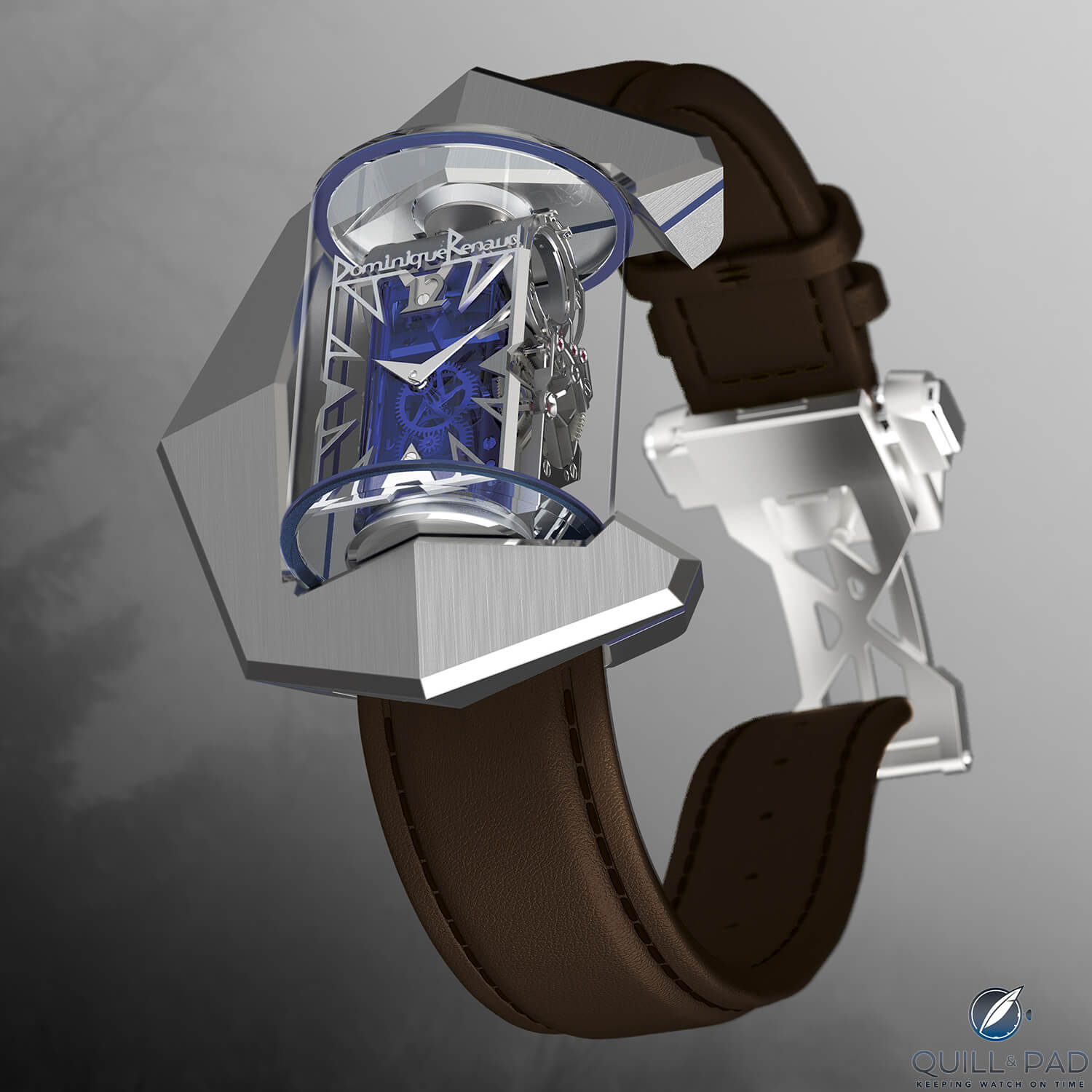
Dominique Renaud DR01 Twelve First
Renaud’s first lab experiment is called the DR01 Twelve First, and it does not seek to build the foundations of a brand (Renaud insists that there is no desire to create an eponymous “brand” as we would know it) but drive research into rebooting and reinvigorating the watch industry.
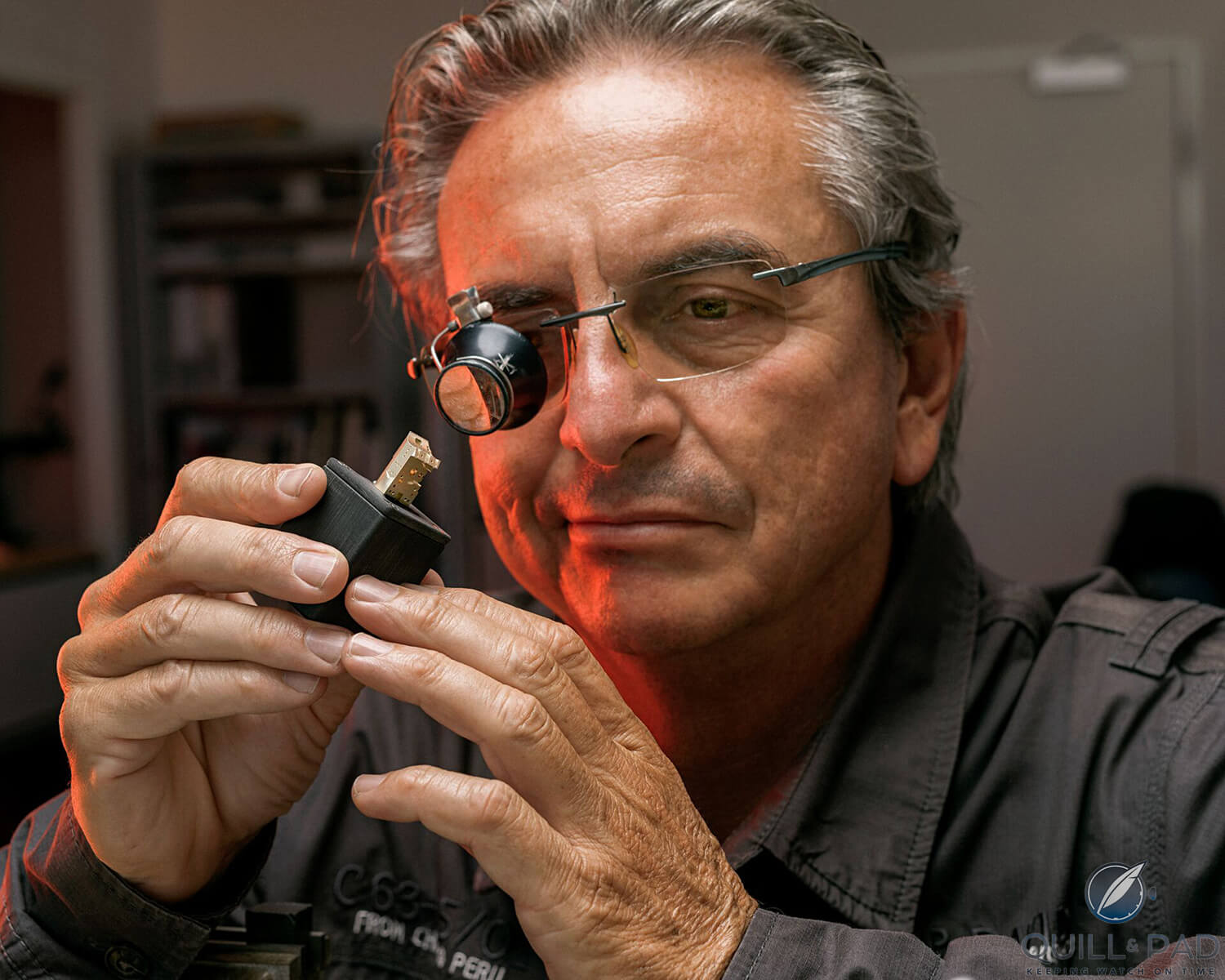
Dominique Renaud
Clearly there is no bashful intention here, simply the driven actions of a creative man with ideas to spare.
The Dominique Renaud DR01, a research project for the wrist
His first watch, which focuses on the balance and how it operates, has a whole bevy of related inventive ideas to support that focus.
It all started with the realization that the hairspring had to go; it was a very old solution that, given technological advances, should be able to be improved upon if approached from an entirely new direction.
Thinking outside the box could be the official tagline for the entire endeavor from Renaud, as the lack of research and development into new solutions for mechanical watches was his longtime complaint about the watch industry as a whole. That is why the revered balance spring wasn’t safe from his horological demolition.
The balance spring replacement was developed in steps from a variety of promising solutions that ultimately weren’t chosen (yet) for further pursuit. A lateral spring connected to a rack and pinion eventually gave way to a resonant gong combined with banking pins before finally refocusing on the weak link of a balance, the fragile pivot.
During the development it became clear that to eliminate the spiral balance spring, the amplitude of the balance needed to be kept low, which meant entirely new ways of pivoting could be explored.
The result came from a bit of historical inspiration: a pendulum clock from German horologist Sigmund Riefler, whose very heavy pendulum was suspended upon a knife edge providing minimal surface area or energy robbing friction. Renaud was inspired to modify this technique for a wristwatch, using not one but four knife edges, two pairs positioned opposite each other have a minor tip overlap of approximately 0.01 mm, or 1/100th of a millimeter, ten times smaller than a typical balance pivot.
That overlap creates what Renaud is calling a captured pivot, which is fundamentally just a variation of a virtual hinge. The hinge also has the remarkable feature of being incredibly strong in compression or side load, due to only the very tip of the beveled knife edge being that small.
That cannot be said about a standard balance staff pivot, which is often the first part to break under a heavy shock. The blade plate is then attached as the center of a rotating cylinder (which replaces the standard balance wheel), and the blade tips rest in spherical jewels that have been shaped with a precision V-groove through their centers to about 80 degrees.
The amplitude of the balance cylinder is only 30 degrees, giving a working net rotation of 60 degrees, just a bit less than the max banking angle of 40 degrees (one half of the V-groove). Thanks to this very small amplitude of rotation, the balance cylinder can actually be much heavier, making it more stable against shocks due to its mass while still keeping a high frequency.
Lost beat escapements and crossbow spring
This is where the next major change comes in: the elimination of the traditional spiral hairspring and the incorporation of a crossbow-shaped blade spring. Since the large amplitude is no longer needed, the requirement for such a specific spring shape is entirely eliminated. A wide variety of spring shapes can now be used, and for this iteration a double crossbow shape was created that is mounted peripherally to the balance cylinder with the long end mounted adjustably to the main plate (more of a main block, to be fair).
Fine tuning of the frequency comes from the adjustability of that crossbow, but its bigger attribute is how manufacturable it is.
The development of the DR01 began a while ago in Renaud’s head, and over the years of its progression troubles with ETA movement deliveries definitely inspired Renaud to look at spring shapes that can be made using other common methods like wire-EDM or CNC machining. Since the production of spiral hairsprings is actually a closely guarded (and highly monopolized) specialty, it made sense not to rely on a component that has remained largely unchanged for more than 350 years yet has become relatively difficult to source (or at least could easily become so).
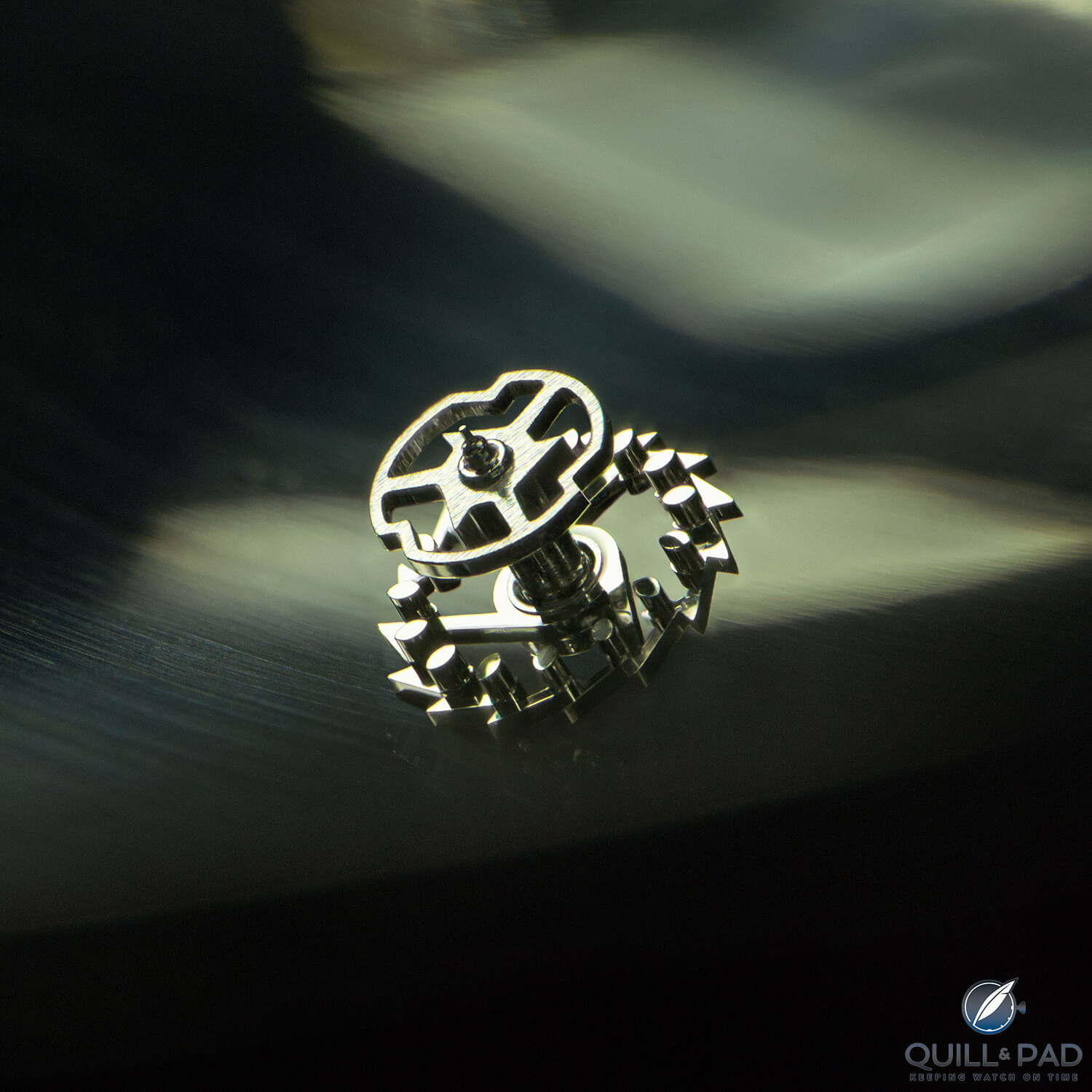
Dominique Renaud DR01 Twelve First experimental orbital escapement (photo courtesy Dominique Renaud/Studio Moccam)
Going along with this is another big departure from the typical Swiss lever escapement: the introduction of a nine-lost-beat rotary escapement or “free rotary lost beat détente escapement with direct impulse” as Renaud calls it.
The purpose of this type of escapement is to manage the impulse on the balance in a couple ways. One is to limit the rotational friction caused by the lift angle (the angle of rotation during which the roller jewel is in contact with the lever forks), which can also introduce disturbances to the balance oscillation. The second is to minimize the energy loss from said friction by reducing how often the escapement forcefully interacts with the balance cylinder.
This new lost-beat escapement sees the interaction only occurring every tenth oscillation, and at a frequency of 5 Hertz that means that nine of the ten beats every second aren’t “counted” by the escape wheel and are lost; therefore nine of the ten beats aren’t disturbed by energy input from the gear train.
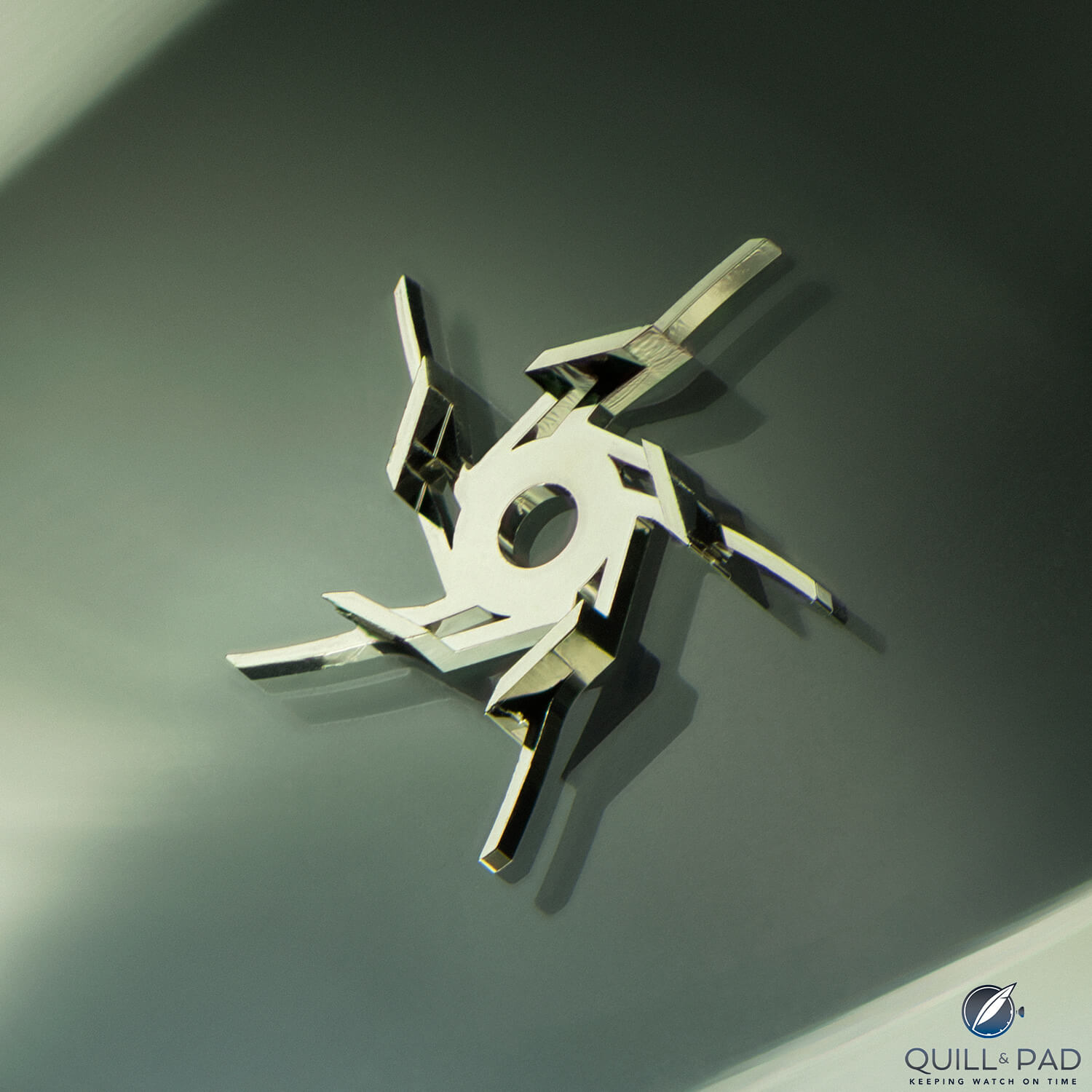
Dominique Renaud DR01 Twelve First escape wheel (photo courtesy Dominique Renaud/Studio Moccam)
The intended effect is to greatly reduce energy use and to introduce more consistency. Obviously without timing data the latter remains to be seen, but the power reserve is already said to be easily 14 days on a single barrel.
That energy is also saved by the actual lift angle of the new escapement, which, compared to the average 50-degree lift angle of a regular balance wheel, is nearly nonexistent at just seven degrees. And it isn’t almost at the center of rotation of the balance (where leverage is poor) but outside of the main body of rotation for better leverage and less loss of energy.
The single impulse is more tangent to the circle of rotation on the lost-beat escapement, meaning the force input is in more of a straight line that loses less energy to angular momentum and torque. All of these factors combined make an incredibly efficient escapement compared to traditional designs.
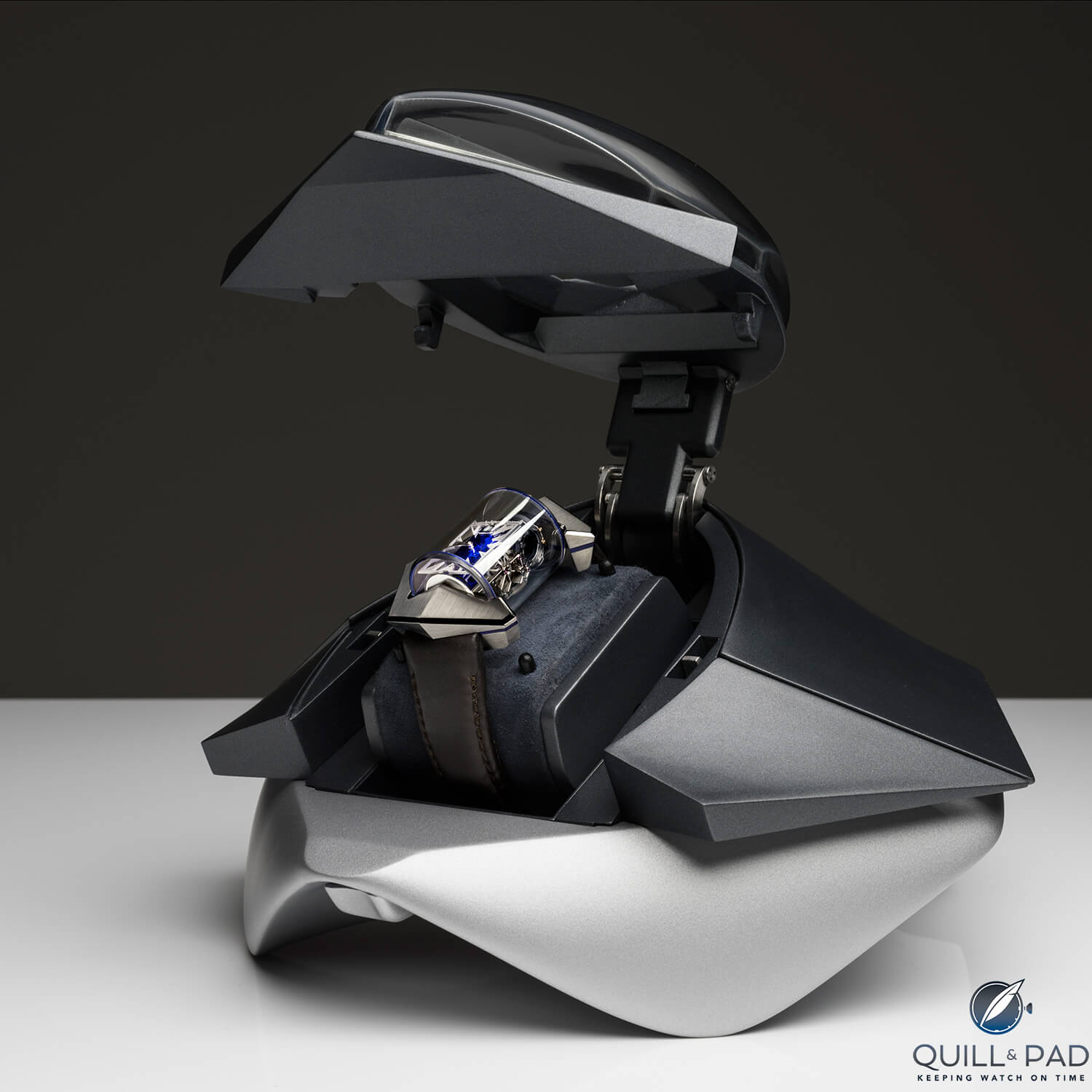
Dominique Renaud DR01 Twelve First in its space-age case (photo courtesy Dominique Renaud/Studio Moccam)
The DR01 isn’t a normal watch and why should it be?
And that is what the DR01 is all about: tossing out the old designs for fresh approaches and freeing oneself from centuries-old constraints. This isn’t about losing touch with traditional watchmaking; it’s about allowing room to grow and new ideas to be born.
Clearly, the old ways have worked pretty great over the past three centuries, but people like Renaud feel it is time to try something new and see if old problems can be addressed in new ways.
The design of the watch is a clear example of that thinking; it does not pretend to be a normal timepiece in any way. Even a little bit.
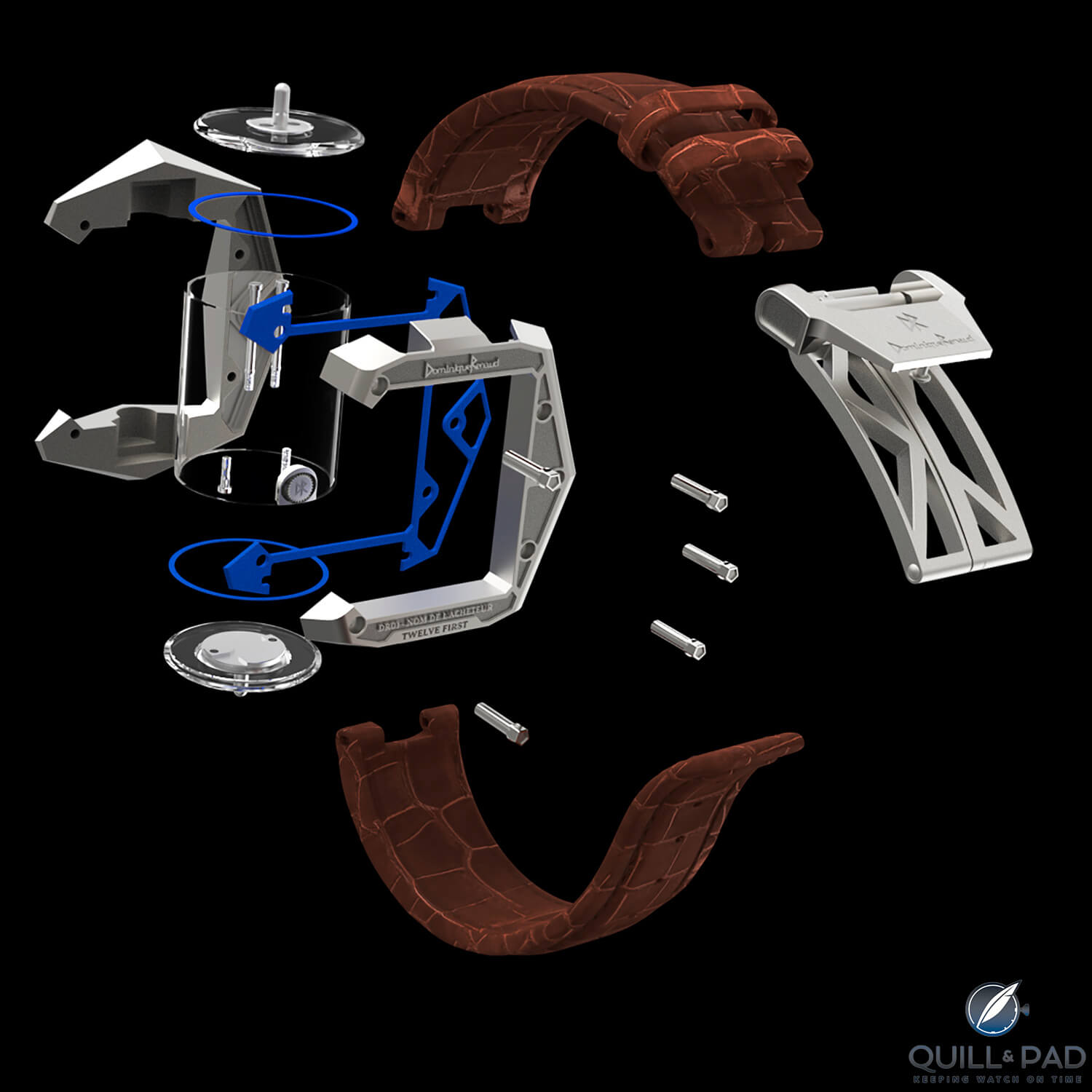
Exploded view of the frame of the Dominique Renaud DR01 Twelve First
The entire movement is housed in a sapphire crystal cylinder that can be rotated to one of six positions at will and is held in a large metal arch. Not a normal watch by any description, it is one that was created solely because it needed to be shown it could be done.
It is an experiment according to most meanings of the word.
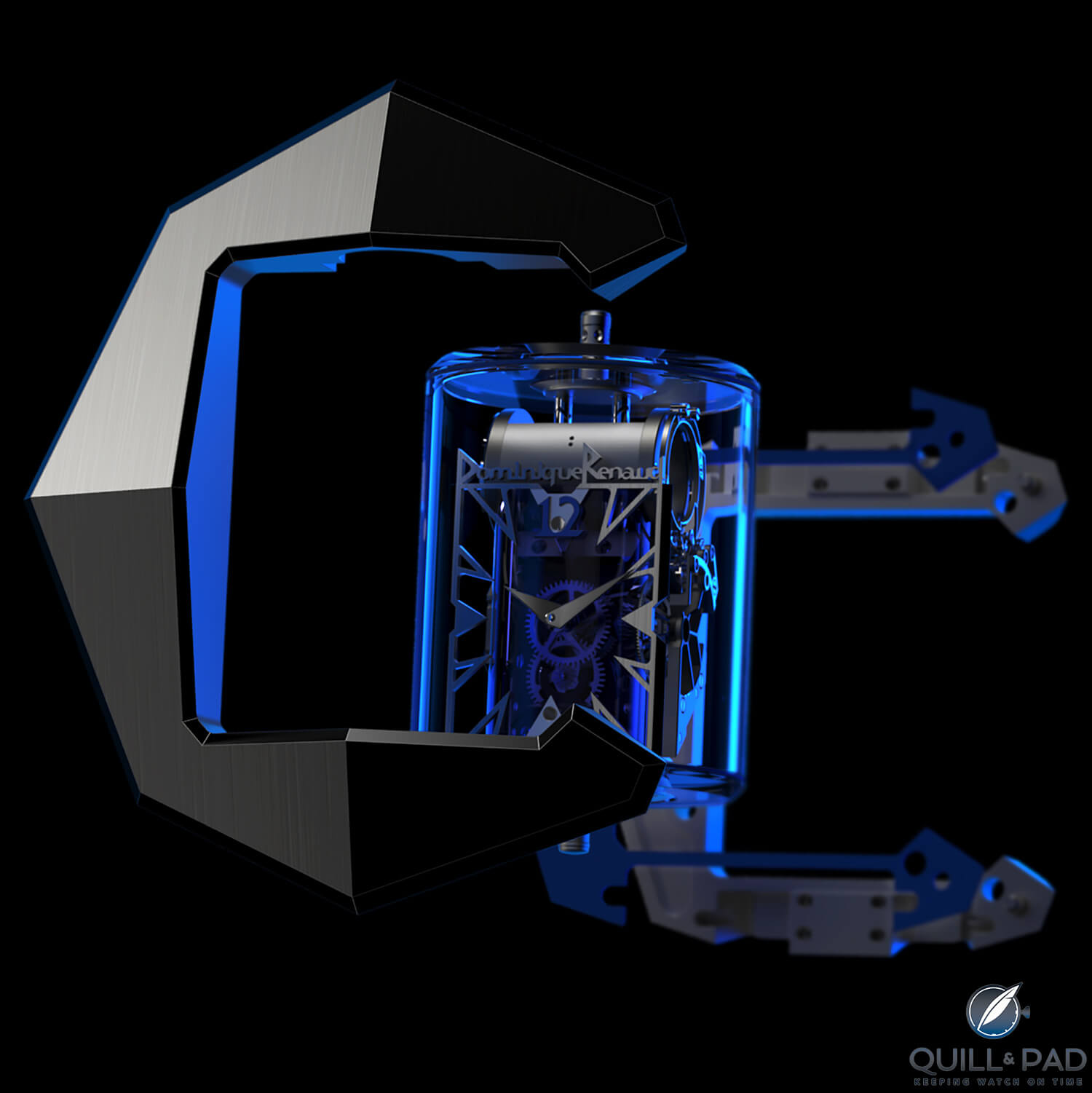
Dominique Renaud DR01 Twelve First
I am rather happy that we are finally seeing what Dominique Renaud has been working on since teasers and tidbits have been coming out for years. Given what he has created, I am very excited to see where future editions or new ideas that slowly trickle out with each of the 12 watches That are meant to evolve and change so that by the end there is a solid repertoire of new mechanical innovation that the industry can call upon and license if desired.
Until then, let’s break it down!
- Wowza Factor * 10 Even if it’s not your style, it can’t be denied that thing wows!
- Late Night Lust Appeal * 100 » 980.660m/s2 This watch can literally blow you away!
- M.G.R. * 71 Since it is time-only it misses a perfect score in this category, but that’s just to nitpick.
- Added-Functionitis * N/A Time-only is pretty much a theme around here. Anyway there is no need for Gotta-HAVE-That cream, even though it makes me feel lightheaded!
- Ouch Outline * 12.5 Biting down on a rock in your peas! Hasn’t happened to me but I have heard stories and have had nightmares. But if it meant getting one of these on my wrist, I would risk it!
- Mermaid Moment * 3 seconds! Watching that super interesting balance and escapement is all you need if the rest of the movement or case hasn’t won you over yet!
- Awesome Total * 684 Multiply the number of diameter of the case (40) with case model number (25) and then subtract the steel alloy number (316) for a glamorous awesome total!
You might also be interested in Dominique Renaud: A Horological Grand Master Then And Now and Dominique Renaud’s DR01 ‘Twelve First’ With Blade Resonator, Experimental Rotary Escapement, And Panoramic 360° Views.
For more information, please visit www.facebook.com/Dominique-Renaud.
Quick Facts Dominique Renaud DR01 Twelve First
Case: 61.33 x 50.4 mm (whole frame holding sapphire crystal cylinder), material customizable
Movement: manual winding Caliber DR01 with experimental rotary escapement and blade resonator
Functions: hours, minutes
Limitation: 12 pieces, each unique according to the wishes of its owner
Price: 1 million Swiss francs
Trackbacks & Pingbacks
-
[…] the triple-slot buck stops with Dominique Renaud’s staggering DR01. More of a mechanical sculpture than a movement, the DR01 features a revolutionary escapement […]

Wonderful Thought Went Into This Design Facinating!
A Genius!